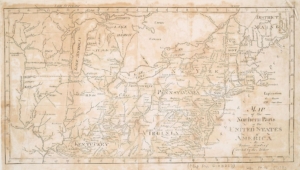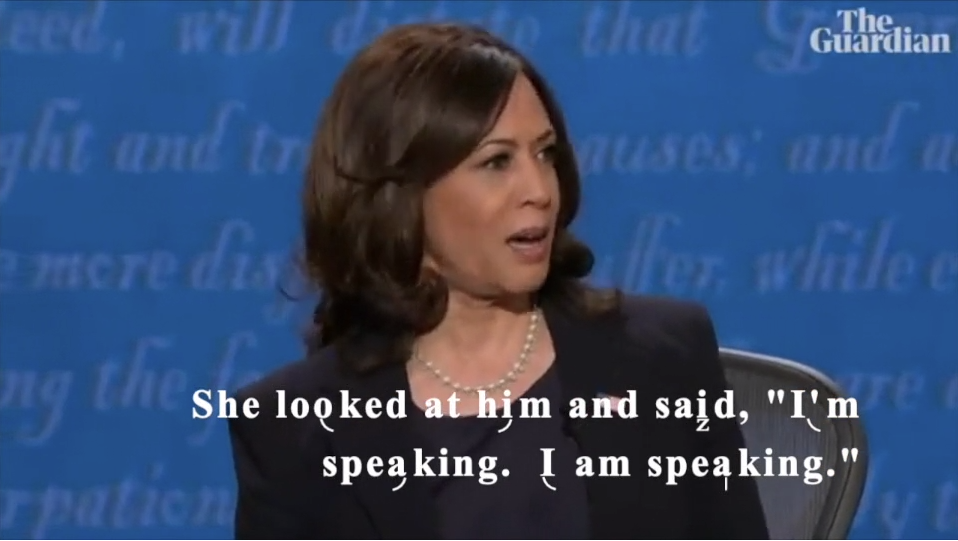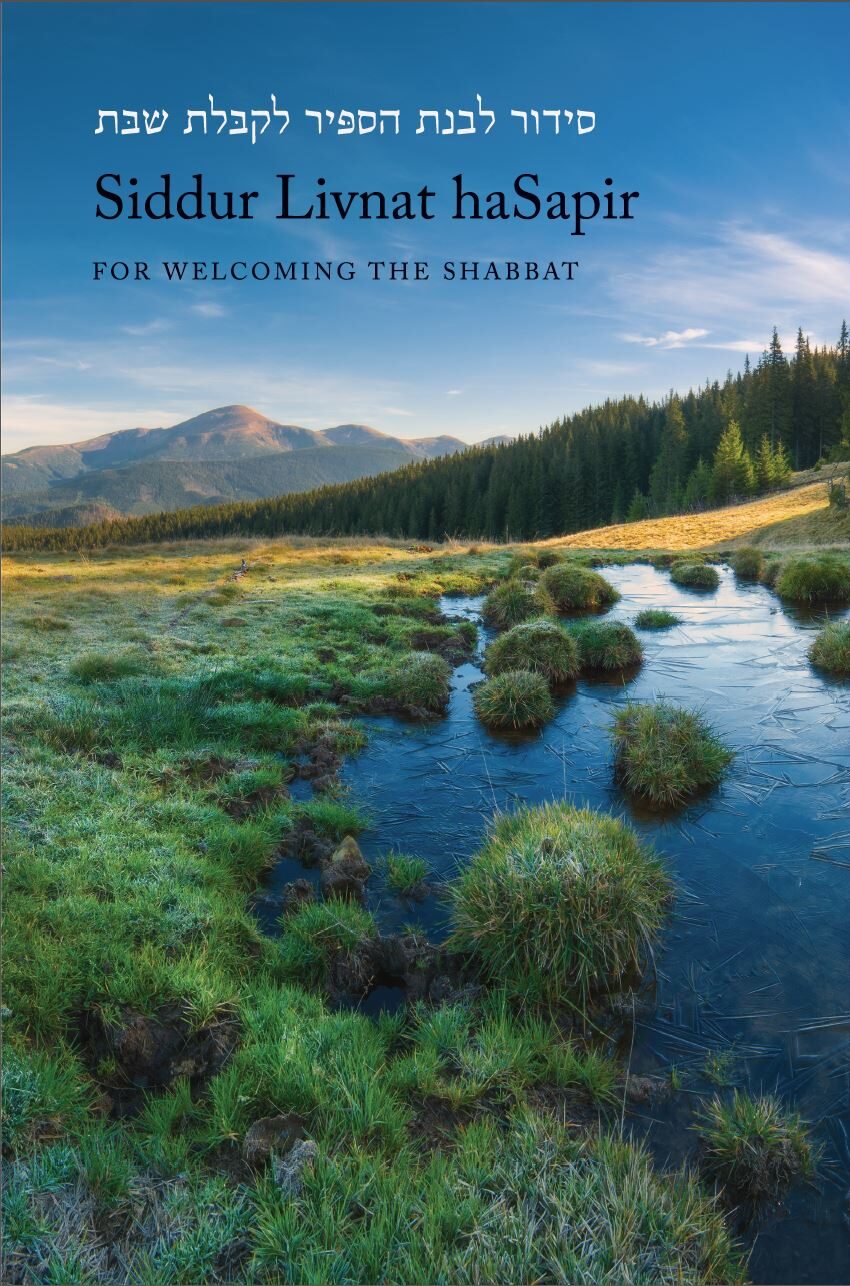| Hebrew | English |
|---|---|
כוונה |
INTENTION |
לְשֵׁם יִחוּד קוּדְשָׁא בְּרִיךְ הוּא וּשְׁכִינְתֵּיהּ, בִּדְחִילוּ וּרְחִימוּ, וּרְחִימוּ וּדְחִילוּ, לְיַחֲדָא שֵׁם יוֹ״ד הֵ״י בְּוָא״ו הֵ״י בְּיִחוּדָא שְׁלִים בְּשֵׁם כׇּל־יִשְׂרָאֵל |
For the sake of the unification of the blessed Holy one and their Presence, with reverence and compassion, and compassion and reverence to unite the yud-hey and the vav-hey (of the Tetragrammaton) in inseparable unity in the name of all Yisrael. |
הִנְנִי מוּכָן וּמְזוּמָּן \ מוּכָנָה וּמְזַמֶּנֶת לְקַיֵּם אֶת מִצְוַת לִרְדֹּף צֶדֶק כַּכָּתוּב בְּתוֹרָתֶיךָ צֶדֶק צֶדֶק תִּרְדֹּף לְמַעַן תִּחְיֶה וְיָרַשְׁתָּ אֶת־הָאָרֶץ אֲשֶׁר־יְהֹוָה אֱלֹהֶיךָ נֹתֵן לָךְ׃ (דברים טז:כ) |
Here we are, ready and prepared to observe the mitsvah of pursuing tsedeq,[1] lit. righteousness, justice as written in your Torah, “Justice, Justice shall you pursue that you may live and inherit the Land[2] ha-Arets, i.e., the Land of Israel, but here Arets is invoked as a cognate of Earth, specifically its inhabitable surface. that Hashem your elo’ah is permitting to you.” (Deuteronomy 16:20) |
וּלְקַיֵּם אֶת מִצְוַת שְׁמִירַת הָאָרֶץ וְאֶת אַדַּמְתָּהּ כַּכָּתוּב בְּתוֹרָתֶיךָ וַיִּקַּ֛ח יְיָ֥ אֱלֹקִ֖ים אֶת־הָֽאָדָ֑ם וַיַּנִּחֵ֣הוּ בְגַן־עֵ֔דֶן לְעׇבְדָ֖הּ וּלְשׇׁמְרָֽהּ׃ (בראשית ב:טז) |
and to observe the mitsvah of preserving the Land and its fertile-earth, as written in your Torah, “Hashem Elohim took the Earthling[3] Adam, i.e., humanity and set them in the Garden of Eden, to tend and preserve it.” (Genesis 2:16) |
וְכַּכָּתוּב וְהָאָרֶץ לֹא תִמָּכֵר לִצְמִתֻת כִּי־לִי הָאָרֶץ כִּי־גֵרִים וְתוֹשָׁבִים אַתֶּם עִמָּדִי׃ (ויקרא כה:כג). |
and as it is written: “The Land shall not be sold permanently because the Land is Mine, since you are all immigrants and resident-settlers according to Me.” (Leviticus 25:23). |
וּבְדִבְרֵי נְבִיאֶיךָ כָּתוּב לֵאמֹר וּנְטַעְתִּים עַל־אַדְמָתָם וְלֹא יִנָּתְשׁוּ עוֹד מֵעַל אַדְמָתָם אֲשֶׁר נָתַתִּי לָהֶם אָמַר יְיָ אֱלֹקֶיךָ׃ (עמוס ט:טו). |
and in the words of your prophets it is written saying: “‘I will plant them on their fertile-earth and they will no longer be removed from their fertile-earth which I gave them’ said Hashem your elo’ah.” (Amos 9:15). |
הַכָּרָת רִבּוֹנוּת הָאָרֶץ |
LAND ACKNOWLEDGMENT |
This land and its fertile-earth is a portion of the traditional territory and sacred land under the stewardship of the Shawnee[4] The Shawnee people are currently represented by the Shawnee Tribe (in Miami, Oklahoma), the Absentee Shawnee Tribe (near Shawnee, Oklahoma), and the Eastern Shawnee Tribe (near Wyandotte, Oklahoma). and Miami[5] The Miami peoples are currently represented by two branches: the Miami Nation of Indians of Indiana and the Miami Tribe of Oklahoma in Miami, Oklahoma. The Indiana branch explains, “We were once one tribe with the present day Miami Tribe of Oklahoma, but became two separate tribes when the United States Government removed the Miami from Indiana, but by treaty, allowed some clans of the tribe to remain in Indiana, thus creating two Miami Tribes. The Tribe members who were removed from Indiana would at first be removed to Kansas only to be removed again to their present location in Oklahoma. The Indiana Miami signed an 1854 treaty with the US government making us the only tribe to be recognized by the government in the State of Indiana post removal. However, only forty-five years later the federal recognition that the Indiana Miami possessed was illegally taken by the government.” peoples. It is now home to many diverse immigrants and indigenous peoples. | |
We acknowledge that this land upon which the city of Cincinnati was built is covered by Cession 11 (the Treaty of Greenville)[6] Concluded August 3, 1795. For the document, find the treaty here. a formal political treaty with the federal government of the United States of America that was entered into by the Wyandot, Delaware,[7] At first it may be surprising to see the Lenapé people listed among the nations in the Treaty of Greenville, mainly covering Ohio, as they were originally based farther to the east. The tragedy witnessed by this document is that the Lenapé were already living as refugees driven westward into Ohio by the time the treaty was signed. Shawnee, Ottawa, Chippewa, Potawatomi, Miami, Eel River, Wea, Kickapoo, Piankeshaw, and Kaskaskia peoples in the hope of achieving an enduring peace and the survival of their people and culture after centuries of conflict instigated by Spanish, French, Dutch, and British colonial powers and their proxy local settler governments, armies, and militias. | |
Though we as Jews have also suffered from land displacement, cultural displacement, forced assimilation, and genocide we acknowledge that we (not as Jews, but simply) as non-indigenous people in this land, have benefited from relationships, long-established through settler colonialism, which has grievously harmed, and still harms, indigenous peoples, in their livelihood and life-ways, and the habitats sustaining the lives of native animals and vegetation — directly through predation, and indirectly through disruptive land-use practices, including unsustainable extractions of Nature’s bounty, locally, regionally, and globally. We commit ourselves to community policies and considerate actions which mitigate against and reverse these harms. |
Information on the treaty by which the land was ceded (the Treaty of Greenville) was first obtained from the online interactive map at https://native-land.ca, which covers Indigenous lands globally. For adapting this acknowledgement to your context, please first specify your location. Follow-up research was done with the aid of Wikipedia and other online resources. This Land Acknowledgment is a “living document” and was last updated by the author on 28 November 2024.
We hope this Land Acknowledgment will continue to be developed and improved upon. How can we say “we acknowledge the ways in which we, as non-indigenous people in this land, have benefited from colonialism,” when these ways are not indicated? Detailing these ways is at the very least, an opportunity for an individual and group discussion, but in future iterations of the land acknowledgement, I’d like this section to be developed further. We must also not make this simply lip service — we must think of what policies our communities need to institute to undertake actions that mitigate and reverse the harms done in alignment with the interests of indigenous peoples.
The language of the indigenous land acknowledgement offered here was adapted by Aharon Varady from one compiled by Dr. Aurora Mendelsohn found in her Mendelsohn/Kalikow Family Haggadah (2020). That Land Acknowledgement was itself adapted from one offered at the Kohenet service held at the Parliament of World Religions, Toronto, November 2018. That Land Acknowledgement read in part, “Jews of many backgrounds have experienced a sense of geographical and cultural displacement over the years. We acknowledge our history of displacement, and as importantly, we acknowledge the ways in which we as non-indigenous peoples and settlers have benefited from colonialism, former and ongoing which has hurt and oppressed First Nations peoples. We ask for your forgiveness at this time.”
Dr. Mendelsohn’s kavvanah observes a mitsvah or commandment of “recognizing the sovereignty of the land.” I can imagine perhaps this relating to the mitsvah of bal tashḥit — not laying waste (or being wasteful) or even the commandment in the decalogue of “honoring your mother,” where the Earth is understood as our mother per Psalms 139:13-16. In my kavvanah, I situate the mitsvah first with Deuteronomy 16:20, to pursue justice, and then with the mitsvah given to Adam in Genesis 2:16, to tend to and preserve the Garden of Eden. In that tale and its midrashic expansion, Adam is created outside of the Garden, but placed inside as its caretaker. In the language of the Tanakh, all of humanity, in all of its diverse expression — all the nations — are planted in the earth — a profound agricultural metaphor. Adam, as the first earthling, immigrant, and caretaker is given responsibility to respect and concern themselves with the well-being of this great garden. But Adam is also a metaphor for humanity as a whole, and I understand this story such that we should be preoccupied with our collective well-being in this precious biosphere, as individual human beings part of collective human groupings, and as an interdependent species sharing rich, complex and interconnected ecologies with other species. I don’t want to extend the metaphor of the caretaker gardener too far for fear of its misuse. (A tidy garden with every root kept in check, every branch pruned, and every species kept within its designated plot, and all “weeds” eliminated likely appeals to the worst and most dangerous people.) I feel I’m on safe ground simply stating that the mitsvah of loving one’s fellow as oneself (Leviticus 19:17-18) is implicit here, and that the Torah constantly exhorts us not to see and take, but to temper our predatory impulses and pursue, yes, pursue justice (tsedeq tsedeq tirdof). Might does not make right and we must always take a principled stand against land theft regardless of any claim to indigeneity, manifest destiny, or divine inheritance. The history and pattern of the abuse of indigenous peoples worldwide, is one that argues for its recognition as particularly depraved. The economic, political, and other cultural assumptions at the root of this abuse, historical and ongoing, is worthy of our sober concern and action, especially in the places where we live, so that we may possibly mitigate, correct, and support the well-being of those people’s harmed in the development of those places we call our home. —Aharon Varady
Notes
| 1 | lit. righteousness, justice |
|---|---|
| 2 | ha-Arets, i.e., the Land of Israel, but here Arets is invoked as a cognate of Earth, specifically its inhabitable surface. |
| 3 | Adam, i.e., humanity |
| 4 | The Shawnee people are currently represented by the Shawnee Tribe (in Miami, Oklahoma), the Absentee Shawnee Tribe (near Shawnee, Oklahoma), and the Eastern Shawnee Tribe (near Wyandotte, Oklahoma). |
| 5 | The Miami peoples are currently represented by two branches: the Miami Nation of Indians of Indiana and the Miami Tribe of Oklahoma in Miami, Oklahoma. The Indiana branch explains, “We were once one tribe with the present day Miami Tribe of Oklahoma, but became two separate tribes when the United States Government removed the Miami from Indiana, but by treaty, allowed some clans of the tribe to remain in Indiana, thus creating two Miami Tribes. The Tribe members who were removed from Indiana would at first be removed to Kansas only to be removed again to their present location in Oklahoma. The Indiana Miami signed an 1854 treaty with the US government making us the only tribe to be recognized by the government in the State of Indiana post removal. However, only forty-five years later the federal recognition that the Indiana Miami possessed was illegally taken by the government.” |
| 6 | Concluded August 3, 1795. For the document, find the treaty here. |
| 7 | At first it may be surprising to see the Lenapé people listed among the nations in the Treaty of Greenville, mainly covering Ohio, as they were originally based farther to the east. The tragedy witnessed by this document is that the Lenapé were already living as refugees driven westward into Ohio by the time the treaty was signed. |

“הַכָּרָת רִבּוֹנוּת הָאָרֶץ | Indigenous Land Acknowledgment for Cincinnati, Ohio, by Aharon Varady (Havayah community, 2021)” is shared through the Open Siddur Project with a Creative Commons Attribution 4.0 International license.










Leave a Reply